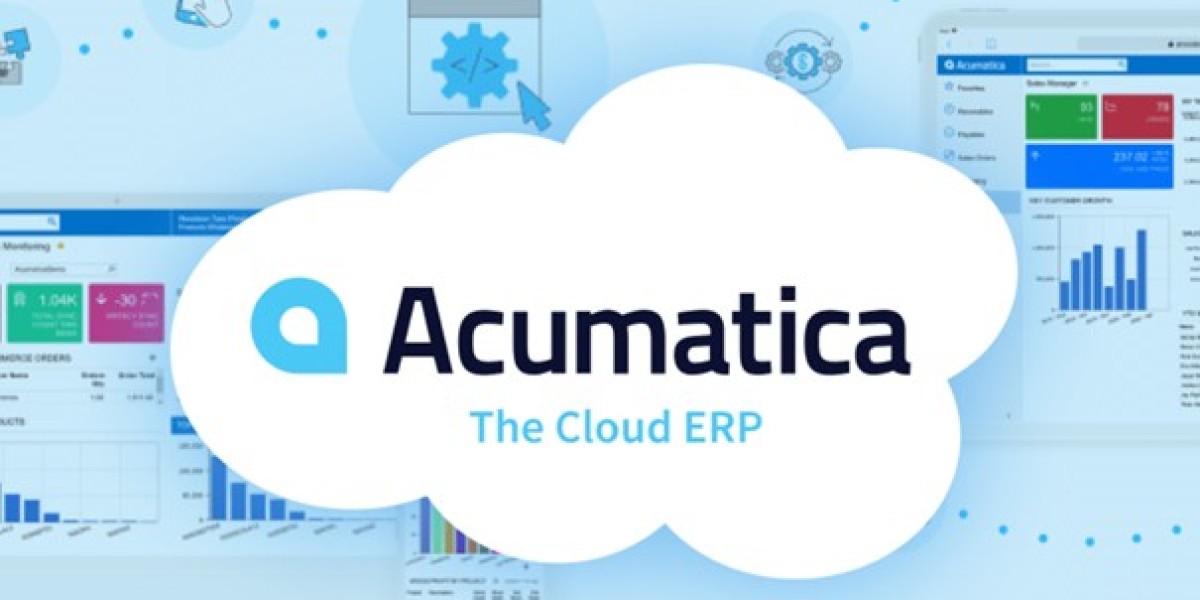Acumatica, a leading cloud ERP solution, offers powerful tools to help businesses streamline operations and gain deeper insights into their processes. One of its standout features is its ability to integrate seamlessly with various applications and services, enabling companies to create a unified system tailored to their unique needs. In this guide, we'll explore the essentials of Acumatica integration, why it's crucial for business success, and how to get started. We'll also provide practical tips to ensure a smooth integration process.
- Introduction to Acumatica Integration
Understanding the Importance of Integration
For modern businesses, managing data across multiple platforms can be a significant challenge. Disconnected systems lead to inefficient workflows, data silos, and missed opportunities for growth. This is where Acumatica integration comes into play. By connecting Acumatica with other software and systems, businesses can automate processes, reduce errors, and improve decision-making through real-time data access.
Why Choose Acumatica for Integration?
Acumatica stands out due to its flexible architecture, allowing easy integration with various third-party applications. Whether you're using CRM software, e-commerce platforms, or specialized industry applications, Acumatica's open API structure enables seamless connectivity. This flexibility is essential for businesses aiming to optimize their operations without being constrained by rigid systems.
- Benefits of Acumatica Integration
Streamlined Business Processes
Integrating Acumatica with other systems means that data flows seamlessly between different departments and applications. This reduces the need for manual data entry and minimizes the risk of errors. For example, sales data from your e-commerce platform can automatically sync with your accounting module, ensuring accurate financial reporting and inventory management.
Enhanced Data Visibility
One of the most significant advantages of Acumatica integration is enhanced data visibility. With all your business data in one place, you can generate comprehensive reports and gain deeper insights into your operations. This visibility allows for more informed decision-making and a proactive approach to business challenges.
Improved Customer Experience
When customer data is integrated across systems, your team can access complete customer profiles, order histories, and support tickets in real-time. This holistic view enables your customer service team to provide more personalized and efficient service, leading to increased customer satisfaction and loyalty.
- Key Integration Scenarios for Acumatica
CRM Integration
Customer Relationship Management (CRM) systems like Salesforce or HubSpot are crucial for managing customer interactions and sales pipelines. Integrating these systems with Acumatica ensures that your sales, marketing, and service teams have a unified view of customer data, from lead generation to post-sale support.
E-commerce Integration
For businesses operating online stores, integrating Acumatica with e-commerce platforms like Shopify, Magento, or WooCommerce is vital. This integration helps synchronize inventory, orders, and customer information between your store and your back-end systems, streamlining order fulfillment and improving customer satisfaction.
Project Management Integration
For project-based businesses, integrating Acumatica with project management tools such as Jira or Trello can enhance project tracking and resource management. This integration provides real-time updates on project status, budget utilization, and resource allocation, enabling better project planning and execution.
- Steps to Implement Acumatica Integration
Step 1: Define Integration Requirements
Before diving into integration, it’s essential to define your business requirements. Identify the systems you need to integrate, the data that needs to be shared, and the workflows that should be automated. This step is crucial for creating a clear integration strategy and avoiding scope creep.
Step 2: Choose the Right Integration Tools
Acumatica offers a variety of integration tools, including REST and SOAP APIs, webhooks, and third-party connectors like Zapier or Boomi. Choose the tools that best align with your technical capabilities and integration requirements. For complex integrations, consider consulting with an Acumatica partner or specialist.
Step 3: Plan and Execute the Integration
Create a detailed integration plan that includes timelines, resource allocation, and risk management. Execute the plan in phases, starting with a pilot test to ensure the integration works as expected. Address any issues before rolling out the integration across your organization.
Step 4: Monitor and Optimize
After the integration is live, continuously monitor its performance. Track key metrics such as data accuracy, process efficiency, and user adoption. Use this data to identify areas for improvement and make necessary adjustments to optimize the integration.
- Common Challenges and How to Overcome Them
Data Mismatch and Inconsistencies
One of the most common challenges in integration projects is data mismatch. This occurs when data fields or formats don't align between systems, leading to errors and inconsistencies. To overcome this, ensure that data mappings are correctly configured and perform thorough testing during the integration phase.
Security and Compliance Issues
Integrating multiple systems can create security vulnerabilities if not properly managed. Implement robust security measures, such as encryption and access controls, to protect sensitive data. Additionally, ensure that your integration complies with relevant regulations, such as GDPR or HIPAA, depending on your industry.
Scalability Concerns
As your business grows, your integration needs may change. Plan for scalability by choosing integration tools and architectures that can handle increased data volumes and additional systems without compromising performance.
- Best Practices for a Successful Acumatica Integration
Involve Stakeholders Early
Involving key stakeholders from the beginning ensures that the integration meets the needs of all departments. Regularly update stakeholders on progress and gather feedback to make informed adjustments to the integration plan.
Focus on User Training
Even the best integrations can fail if users don’t know how to utilize them effectively. Provide comprehensive training and resources to ensure your team can leverage the integrated systems to their full potential.
Perform Regular Maintenance
Integration is not a one-time effort. Regularly review and update your integration to accommodate changes in business processes, software updates, and new requirements. Proactive maintenance helps prevent issues and ensures long-term success.
- Choosing the Right Partner for Acumatica Integration
Why Work with an Acumatica Partner?
Choosing the right partner for your Acumatica integration can significantly impact the success of your project. An experienced Acumatica partner brings in-depth knowledge, proven methodologies, and technical expertise to handle complex integrations effectively. They can also provide ongoing support and training, ensuring your integration continues to deliver value as your business evolves.
How to Select the Best Partner
Look for a partner with a strong track record of successful Acumatica integrations in your industry. Check references and case studies to gauge their expertise. Additionally, ensure they offer post-integration support to help you navigate any challenges that may arise.
Conclusion
Acumatica integration can transform the way your business operates, enabling you to streamline processes, enhance data visibility, and improve customer experiences. By following the best practices and steps outlined in this guide, you can achieve a successful integration that supports your business goals. Whether you're integrating CRM, e-commerce, or project management systems, Acumatica flexibility and robust tools make it an ideal choice for businesses looking to build a connected, efficient, and scalable operation.



